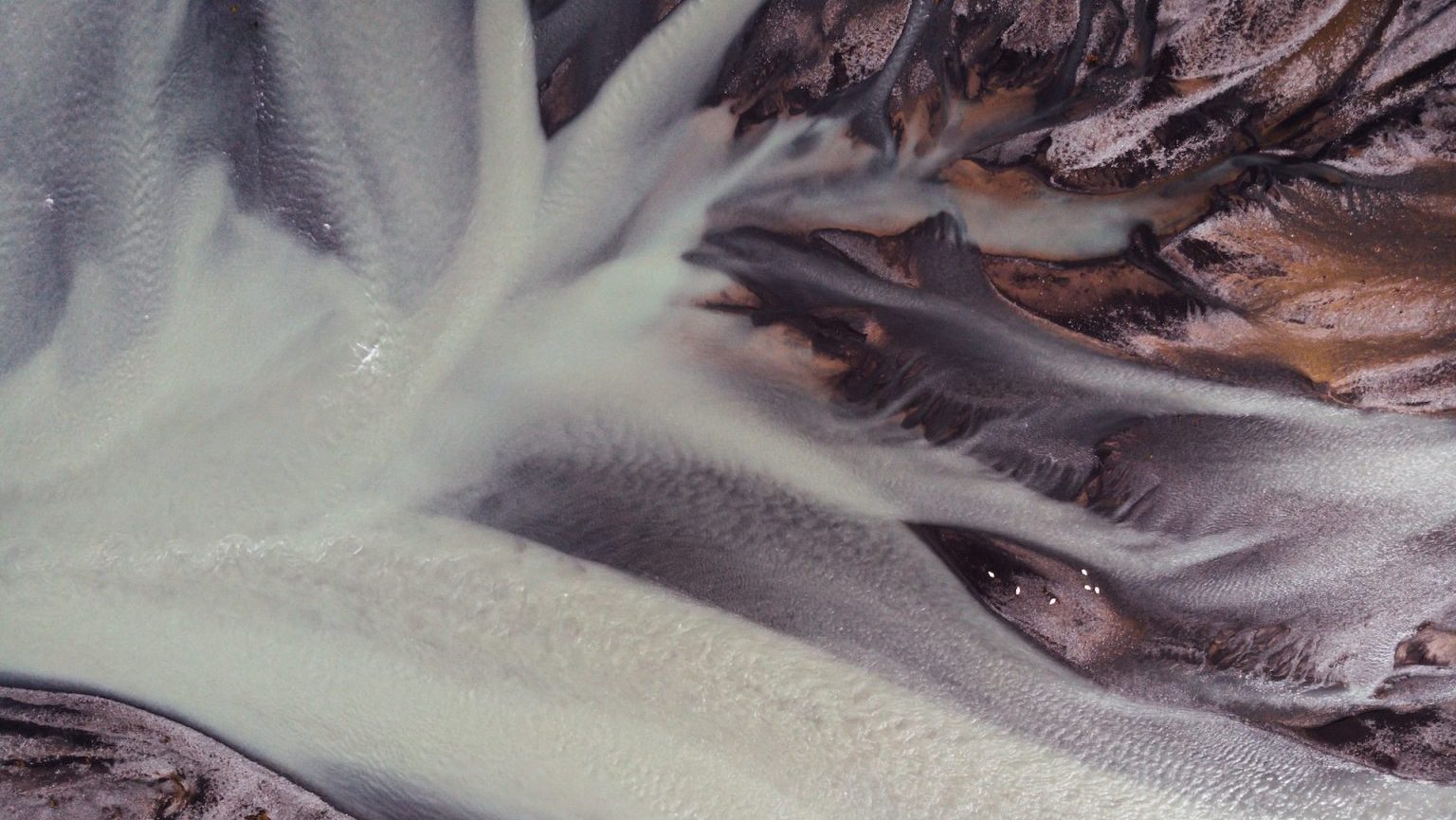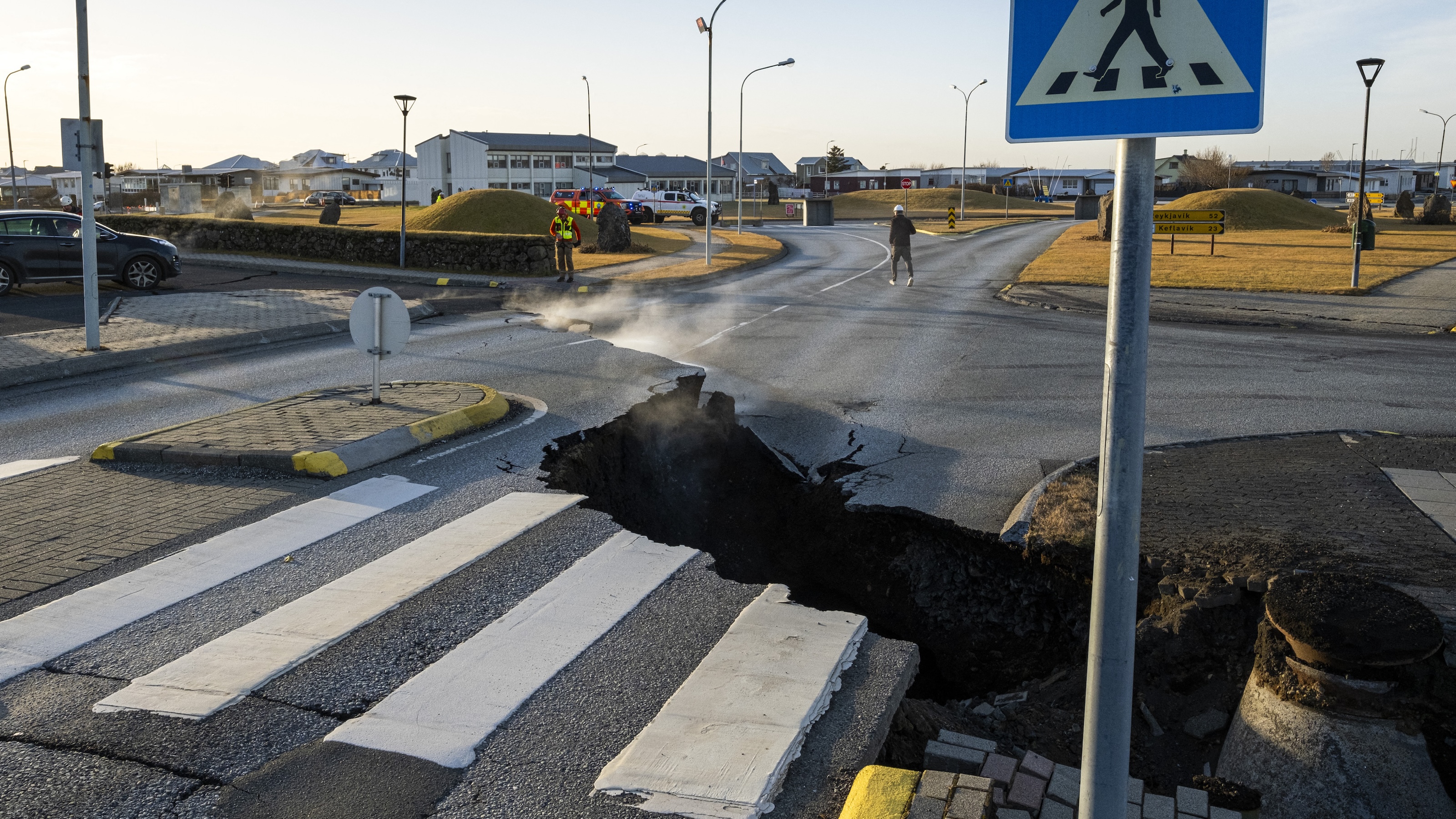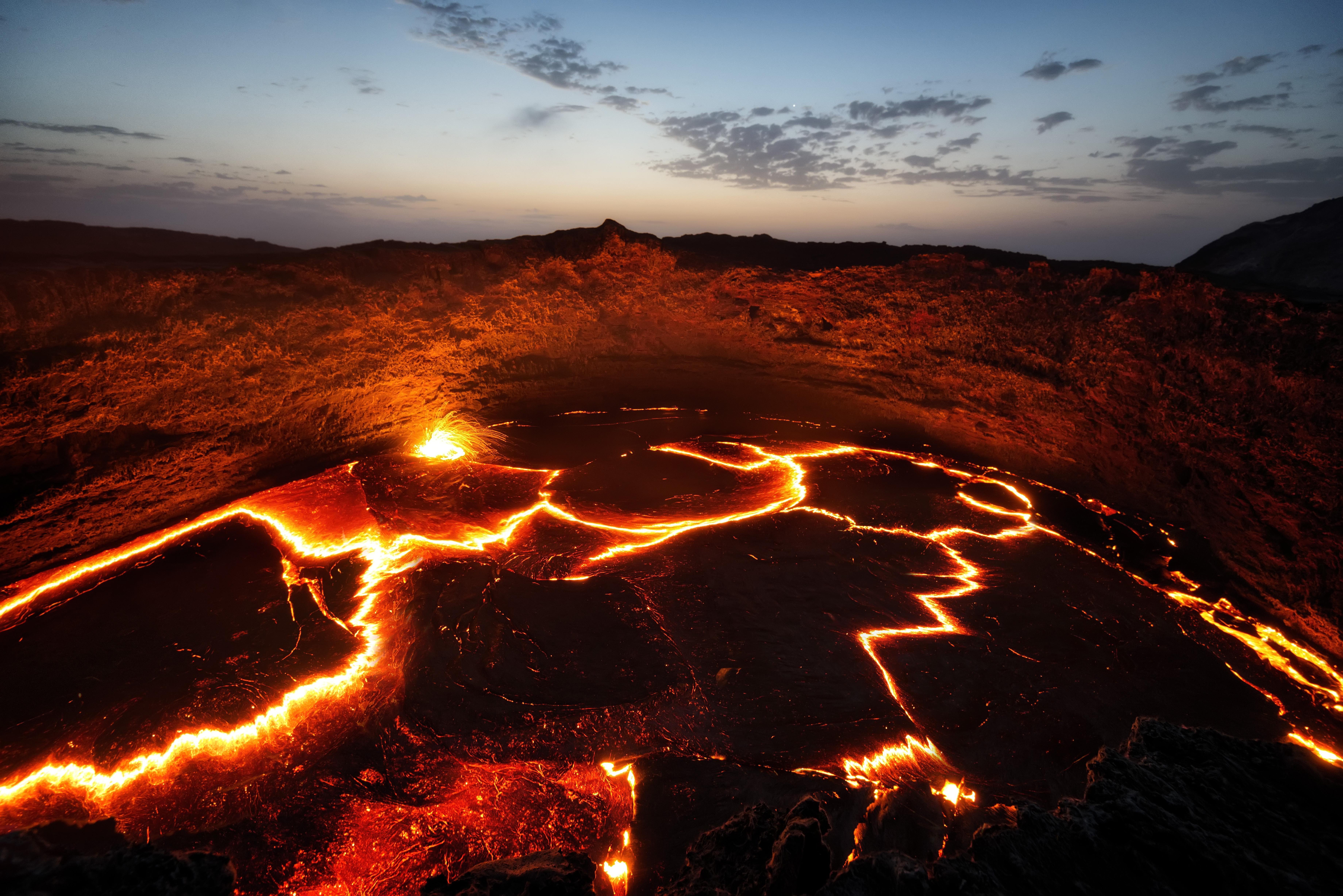The signs that lead to the Eyjafjallajökull eruption
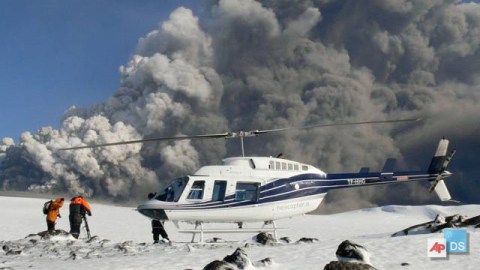
Nothing like a good Nature paper to get the media’s attention, especially when it was about the biggest air traffic disruption in almost a decade. Of course, the headlines I saw were just plain confusing on the whole: “Iceland Eruption linked to weird magma plumbing“, “How the Icelandic volcano issued warnings for months before its eruption“, “Magma mixer and odd plumbing made Iceland go pop“. So, why is everyone so excited about Iceland again?
I sat down with the brand new paper in Nature by Freysteinn Sigmundsson (and about 15 other authors) to see what was being said. I have to admit, the paper was a nice, succinct, clearly-written paper that tells us three important things.
The key distinction that the authors want to draw is that a lot of what we know about the signs of an impending eruption are from highly active volcanoes (which they don’t specifically define, but my guess is something that erupts at least one a decade). This means that moderately active volcanoes that eruption once a century or longer might have different signs that an eruption is coming. This might be because the magmatic system is “cold” relative to a highly active volcano, so that new magma has to define its space with each intrusion.
What is their evidence for these observations? Long-term geodetic and seismic information! For example (see below):
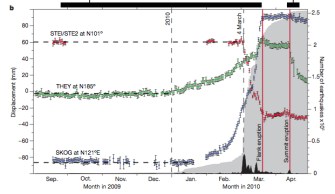
A compilation of seismic and geodetic data leading up to the Eyjafjallajökull eruption. Figure 2B from Sigmundsson et al., 2010.
These lines of evidence suggest that a series of magmatic sills and dikes (horizontal or vertical intrusions of magma) were intruding under the volcano. Now, the exact geometry of the sills and dikes is impossible to know because we can’t see them, but inferences can be draw based on how the land surface was deformed (pdf). By modeling the deformation, the authors concluded that the deformation couldn’t be from a single magma chamber filling up. Instead, we get a series of sills from 4-6 km and a single dike intruding under the flank fissure vent location (see below).
One of the most surprising aspects of the behavior of Eyjafjallajökull was that when the first fissure vent eruption started, the volcano did not immediately start to deflate, which is what you might expect as lava is erupted from the system. The suggestion of the authors is that the inflation was being caused by a pressurization of the system as magma flowed into the sill complex. The eruption relieved that pressure, but the rate of magma entering the sill complex at depth (20-30 m3/s) was still higher than the rate of the eruption (~13 m3/s for the fissure). Deformation didn’t start again until the summit eruption, when eruptive rates reached 30-60 m3/s, generating (with the help of water), the 6-9 km plume that closed Europe. It is all about magma flowing into the system at depth and exiting the system during the eruption, and how the flow balance (what is coming in versus going out) could dictate the style of deformation.

Shaded relief map showing the relative geographic location of sill and dike intrusion under Eyjafjallajökull (left) and the model for the depths and shapes of intrusion under the volcano (right). Remember, the dike in the right panel is like a pancake on its edge – so don’t think the “red blob” is a vast cauldron of magma. Figure 3E and 3F from Sigmundsson et al., 2010).
Interestingly, the authors suggest that the long duration of the explosive part of the eruption was caused because the magma needed to be drawn from a wide area in the sill complex, allowing for a longer draining of the system. They do admit, however, that the exact mechanism that caused the fissure eruption to be so basaltic (48 wt% silica) versus the andesitic (~58 wt% silica) explosive eruption is unclear – could be interacting with the remnant crystals of previous eruptions, could be mixing with more silica-rich magmas that existed under Eyjafjallajökull, could be from partially melting crust under the volcano. All of these processes can cause a mafic, low silica magma become an intermediate, higher silica magma – and thus change the character of eruption from passive lava flows to explosions (That is where us petrologists come in: trying to solve the magma genesis question).
So, Eyjafjallajökull shouldn’t be considered all that odd – moderately active volcanoes erupt all the time (not individually, of course, or they wouldn’t be “moderately active”). However, how Eyjafjallajökull is different is how closely it was watched, even if the signs of an eruption weren’t recognized. As the authors point out “clear signs of volcanic unrest signals over years to weeks may indicate reawakening of such [moderately active] volcanoes, whereas immediate short-term eruption precursors may be subtle or difficult to detect.” The long and short? We might need to look at volcanoes with longer recurrence intervals (periods between eruptions) differently in order to see if they are headed towards an eruption, as compared to noisy volcanoes like Etna, Kilauea or Merapi.
It also, at least to me, shows how the large volume of realtime volcano data out on the internet – GPS, earthquakes and more – can almost overwhelm the professional volcanologic community. This means that average citizens can play an important role in monitoring by looking for changes in these signals at the multitude of at least partially “wired” volcanoes worldwide. Just like amateur astronomers can catch all the comets and novae that the professional miss, we might be entering the age where amateur volcanologists can offer important information in volcano monitoring.
Top left: A National Geographic film crew recording the eruptive plume from Eyjafjallajökull
